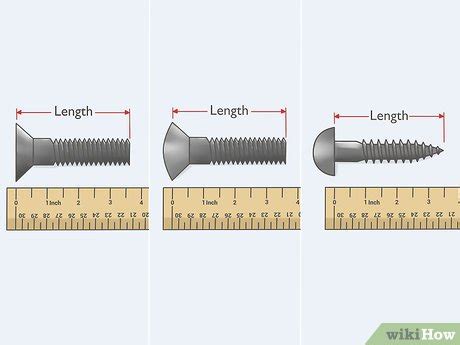Measuring Screw Diameter: A Beginner's Handbook
Measuring screw diameter might seem straightforward, but accuracy is crucial in various applications, from DIY projects to professional engineering. A wrong measurement can lead to ill-fitting parts, compromised structural integrity, or even project failure. This beginner's handbook will guide you through different methods for accurately measuring screw diameter, addressing common pitfalls and offering tips for precision.
What is Screw Diameter?
Before diving into measurement techniques, let's clarify what we mean by screw diameter. The diameter is the measurement across the widest part of the screw's head or shaft. This is usually the major diameter, which is the largest diameter of the screw's threads. Don't confuse this with the minor diameter (the smallest diameter of the screw's threads), which is rarely used in practical measurements for selecting the right screw. Understanding this distinction is vital for precise measurements.
Methods for Measuring Screw Diameter
Several methods can be used to measure screw diameter, each with its own advantages and disadvantages:
1. Using a Caliper
A caliper, whether digital or vernier, is the most accurate and commonly used tool for measuring screw diameter.
- Digital Calipers: Offer digital readouts, making measurements quick and easy. Simply place the screw between the jaws, close them, and read the diameter displayed on the screen.
- Vernier Calipers: Require a bit more understanding to read, but they're just as accurate. The scale allows for precise measurements down to fractions of a millimeter.
How to Use a Caliper:
- Ensure the screw is clean: Dirt or debris can affect the measurement.
- Place the screw between the jaws: Make sure the jaws are perpendicular to the screw's axis.
- Close the jaws gently: Avoid applying excessive pressure.
- Read the measurement: This is straightforward with digital calipers. Vernier calipers require understanding the vernier scale.
2. Using a Ruler
While less precise than a caliper, a ruler can be useful for quick estimates, especially for larger screws.
How to Use a Ruler:
- Lay the screw down on a flat surface.
- Align the ruler against the screw's head or shaft.
- Note the measurement at the widest point. This will be an approximation, particularly for smaller screws with fine threads.
3. Using a Screw Gauge
A screw gauge, also known as a micrometer, is a very precise instrument commonly used in engineering and manufacturing to measure small diameters, such as those of screws and wires. It’s known for its high accuracy and ability to measure to very small fractions of a millimeter or inch. Many find this option overkill for home projects.
4. Using a Screw Chart or Identification Guide
If you're unsure about the screw type or size, referring to a screw chart or identification guide can be helpful. These charts typically list the diameter alongside other screw specifications like thread pitch and length. While not a direct measurement method, it provides a strong indication of screw size.
How to Identify Screw Head Types
The type of screw head doesn't affect diameter measurement, but understanding head styles is important for selecting the correct screws and tools. Common types include Phillips, Slotted, Hex, Torx, and many more.
Troubleshooting Common Measurement Issues
- Inconsistent Measurements: Ensure the screw is clean and the measuring tool is properly calibrated.
- Difficulty measuring small screws: Use a caliper or screw gauge for the most accurate results.
- Uncertainty about the scale: If using a vernier caliper, familiarize yourself with reading the vernier scale.
Frequently Asked Questions (FAQ)
What is the difference between the major and minor diameter of a screw?
The major diameter is the largest diameter of the screw's threads, while the minor diameter is the smallest diameter. We typically measure the major diameter to identify the screw size.
Can I use a ruler to measure screw diameter?
While possible, a ruler is less accurate than calipers, particularly for screws with fine threads. It provides a rough estimate, but for precise work, a caliper is recommended.
Which tool is most accurate for measuring screw diameter?
A digital or vernier caliper is generally the most accurate for most applications. Screw gauges (micrometers) offer even greater precision, especially for smaller screws.
How important is accuracy when measuring screw diameter?
Accuracy is crucial to ensure proper fit and function. An incorrect measurement can lead to loose screws, stripped threads, or even structural failure.
What should I do if my measurements are inconsistent?
Recheck your technique, ensure the screw is clean, and verify that your measuring instrument is properly calibrated.
By following these steps and using the appropriate measuring tools, you can confidently and accurately measure the diameter of any screw, ensuring the success of your projects. Remember, choosing the right tool for the job is crucial for accuracy. For most DIY projects, a caliper will suffice, but for precision work, a screw gauge may be necessary.

